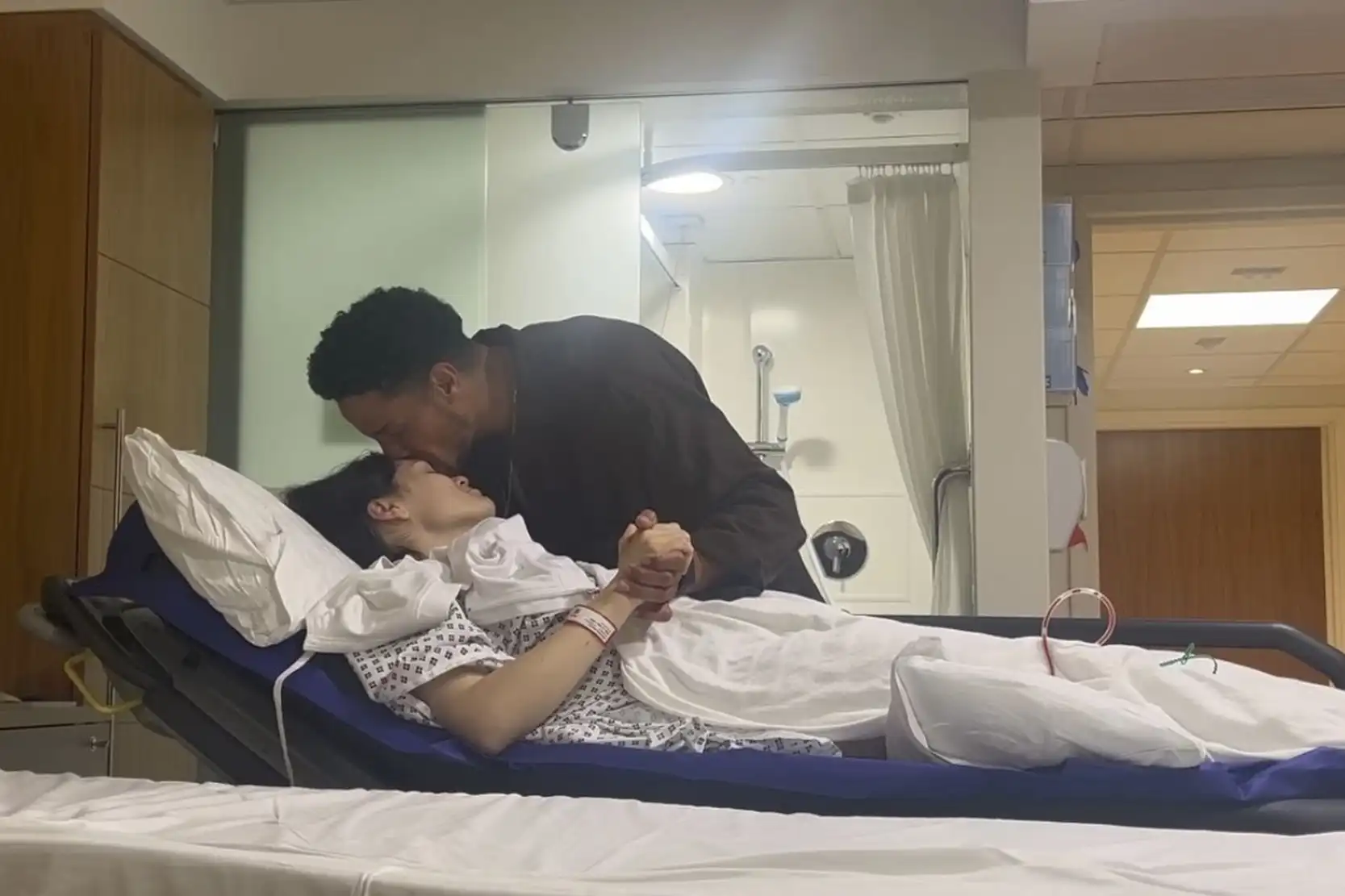
Recognizing Breast Cancer Symptoms: What You Need to Know?
-
Rahul Priydarss
Discover comprehensive insights into breast cancer symptoms in our latest article. Learn about common signs, diagnostic procedures, and treatment options to empower proactive healthcare decisions. Stay informed and vigilant with our expert guide. #BreastCancerSymptoms #EarlyDetection #Healthcare #cervicalcancer
Introduction:
Breast cancer is a complex disease defined by the uncontrolled proliferation of aberrant cells in the breast tissue. Effective treatment and higher survival rates still depend heavily on early identification. Recognizing the numerous symptoms associated with breast cancer is critical for early detection and improved results. In this detailed guide, we go over each symptom in-depth, encouraging people to be proactive about their breast health.

Table of Contents
What Is Breast Cancer:
Breast cancer develops when cells in breast tissue undergo genetic alterations, resulting in uncontrolled proliferation and tumor formation. These malignant cells can infect nearby tissues and, if untreated, travel to distant organs via the lymphatic system or circulation. While the specific causes of breast cancer are unknown, various risk factors contribute to an individual’s susceptibility, including genetic predisposition, hormonal influences, lifestyle decisions, and environmental exposures.
Detailed Symptoms of Breast Cancer:
According to various studies and publications breast cancer symptoms are listed below-
Lump or Mass in the Breast: Breast cancer is often diagnosed as a palpable lump or tumor in the breast tissue. These lumps may feel distinct from the surrounding breast tissue, feel firm, and have an uneven form. It’s crucial to realize that not all breast lumps are malignant; benign illnesses like fibroadenomas and cysts can produce comparable lumps. Women should self-examine their breasts daily to quickly identify any new or unusual lumps.

Changes in Breast Size or Shape: The size or form of the breast may noticeably change as a result of breast cancer. It is possible to have asymmetry between the breasts or noticeable distortion of the breast contour. People should be on the lookout for any abrupt or persistent changes in their breast appearance and should seek medical attention if such changes are noticed.
Skin Changes: Certain skin changes around the breast area could suggest the existence of breast cancer. These alterations include redness, scaliness, dimpling, or puckering of the skin, which has the texture of an orange peel. Inflammatory breast cancer, an uncommon but aggressive form of the illness, is frequently characterized by prominent skin abnormalities. Any inexplicable changes in skin texture or coloring warrant additional research.
Nipple Discharge: While many women experience nipple discharge that may be harmless, the chronic or bloody discharge sometimes indicates an underlying breast problem, like cancer. Many Individuals should be aware of any certain or long-term nipple discharge and get medical attention.
Breast Pain or Tenderness: Breast pain in females is a common problem among women and is likely related to breast cancer. So chronic or unexplained breast pain should be examined by a doctor. Breast pain may be associated with inflammatory breast cancer problems.
Swelling or Thickening of Breast Tissue: Also, Breast cancer can cause swelling or thickening of the breast skin, which can be seen by self-examination or by doctors. Many Individuals should be aware of any type of changes in breast texture or density and then seek medical help if necessary.
Lymph Node Enlargement: The development of swollen lymph nodes in the underarm area may sign that breast cancer has spread to other lymph nodes or areas. Palpable lymph nodes that feel firm, or significantly enlarged should be checked by a healthcare practitioner or doctors immediately.
Early Detection and Screening: Early detection of breast cancer and measures are important for improving breast cancer outcomes. Perform regular breast self-examinations to become familiar with the natural look and feel of your breast’s size and looseness. Healthcare providers perform clinical breast exams as part of a routine checkup. Screening mammography for women of a certain age or at high risk of breast cancer.

What To Do When Breast Cancer Symptoms Show?:
When primary breast cancer symptoms appear, early action is required to begin a diagnostic examination and design a treatment strategy customized to the individual’s specific needs. Here’s what usually happens when primary breast cancer symptoms are found.
Medical Evaluation: If anybody notices any symptoms suggestive of breast cancer, they should see a doctor right away. During the initial medical evaluation, the healthcare professional will take a thorough history, including a discussion of symptoms, risk factors, and a family history of cancer.
Physical Examination: A thorough physical examination will be performed, focusing on the breasts and surrounding lymph nodes. The health care professional will examine the breasts for lumps, changes in shape or form, skin abnormalities, nipple discharge, or other warning signs.
Diagnostic Tests: Depending on the clinical evaluation, additional diagnostic tests may be recommended to confirm the diagnosis of breast cancer and learn more about the scope and characteristics of the disease. Include These tests:
- Imaging Studies: Mammography, ultrasound, or magnetic resonance imaging (MRI) may be used to view breast tissue and detect anomalies such as cancer or masses.
- Biopsy: Biopsy is the most definitive way to diagnose breast cancer. During a biopsy, a pathologist takes a small tissue sample from a suspicious area of the breast and examines it under a microscope to see if cancer cells are present. Core needle biopsy, small needle aspiration, and surgical biopsy are all viable options.
- Lymph Node Evaluation: If the physical examination investigation shows enlarged lymph nodes, Then a lymph node biopsy may be done to evaluate the presence of cancer cells in breast cells or tissue and whether the malignancy has spread beyond the breast.
Histopathological Analysis: Brest tissue samples from the biopsy are known as histopathologically evaluated under the microscope to relate the type of breast cancer, its grade, hormone receptor status (estrogen and progesterone receptors), and expression of HER2/neu proteins. This information helps to make further treatment decisions and diagnose the disease.
Multidisciplinary Team Consultation: When any person or patient finds breast cancer is diagnosed, a multidisciplinary team of health care professionals, including medical oncologists, surgical oncologists, radiation oncologists, pathologists, radiologists, and other specialists, usually meets to review the person’s condition. They analyze all breast cancer diagnosis results and collaborate to do a complete treatment plan that is also told to the patients and their individual needs.
Treatment Planning: Treatment of breast cancer may include a combination of treatments, such as surgery, chemotherapy, radiation therapy, hormone therapy, targeted therapy, or immunotherapy, depending on the type and stage of cancer, tumor characteristics, hormone receptor status, and HER2/neu status. Does. and the individual’s overall health and preferences.
Patient Education and Support: During the diagnosis and treatment process with any patient, patients, and their families must be educated about breast cancer, treatment options, side effects, care, and other useful resources. Emotional support and counseling programs are also available to help people deal with the difficulties associated with a breast cancer diagnosis.
FAQs about Breast Cancer Symptoms:
A1: Breast cancer symptoms typically include the presence of a lump or mass in the breast, changes in the shape or size of the breast, skin abnormalities such as redness or dimples, discharge from the nipple, pain or tenderness in the breast, and swelling or thickening of the breast tissue. To be included. , and increased lymph. Nodes are included. In the underarm or collarbone area.
A2: No, not every breast lump is malignant. Many breast lumps are benign and may be caused by disorders such as fibroadenoma or cysts. However, any new or unusual breast lump should be examined by a healthcare professional to establish its cause and appropriate treatment.
A3: If you notice any changes in your breast, such as a new lump, skin change, nipple discharge, or chronic breast pain, contact your doctor right away. Early diagnosis and prompt medical testing are important for successful detection and treatment of breast cancer.
A4: Breast cancer in women/men is often detected by a combination of many clinical evaluations, diagnosis techniques (mammography, ultrasound, or MRI), and biopsy. In biopsy a small tissue sample from an infected area of the breast and studied under a microscope to confirm the presence of cancer cells.
A5: Treatment options for breast cancer are identified by a variety of criteria, including the type and stage of the cancer, many characteristics of the tumor, hormone receptor status, HER2/neu status, and the individual’s overall health and preferences. Many treatments are given at the same time step by step- like Surgery, chemotherapy, radiation therapy, hormone therapy, targeted therapy, or immunotherapy are all treatment options, either alone or in combination. The treatment plan is customized to the proper needs of each patient and may involve a diverse team of healthcare specialists.

-Please remember, to always consult with healthcare professionals or Doctors for personalised advice related to medical conditions.
Conclusion:
If anyone suffers from breast cancer disease then recognizing the symptoms of breast cancer is important for early identification and treatment. Many individuals can protect their breast health by recognizing and being aware of these symptoms. So everyone must check and do regular self-examination, and adherence to screening standards can help detect breast cancer early and enhance treatment outcomes.
Previous Post




